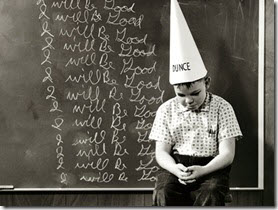 Back when I was in school, my father asked me to do something. I don't remember what it was, specifically … but it was a normal thing for a father to ask a son to do.
Back when I was in school, my father asked me to do something. I don't remember what it was, specifically … but it was a normal thing for a father to ask a son to do.
Later that day, while we were talking, he asked how my day went. I told him about all the things I did. Then, he asked whether I did the thing he asked me to do. I tried to explain that because of how busy I had been, I didn't have time to do what he asked.
He frowned, and I still remember the look in his eye when he told me that from his standpoint, I hadn't done anything.
That put things in a different context.
Each day we make a host of commitments great and small. If my to-do list has 15 items on it, and I do the 13 or 14 of them … then on one hand, I can feel good about how productive I was. Yet, on the other hand, chances are that the one or two things I didn't do were the only things that were supposed to get done for the person whose task got put off until another day.
Getting Things Done.
Stephen Covey makes a big distinction between importance versus urgency. It's easy to lose sight of what needs to get done if you fill your day with interruptions, distractions, busywork, or time-wasters.
 By understanding what is both important and urgent it's easy to clarify the value of what really needs to get done.
By understanding what is both important and urgent it's easy to clarify the value of what really needs to get done.
Understanding why things need to get done is also a big step forward in terms of prioritizing what you commit to do. For example, Scott Scheper suggests your goal should be to balance out your tasks so that 20% are spent on reactive tasks, and 80% are spent on proactive tasks. Why? Because reactive tasks will make you a living, while proactive tasks will make you successful.
Ultimately, there are many ways to sort, sift, filter and prioritize your list.
There is a rule-of-thumb that 20% of your activities will account for 80 percent of your success (this is often called the "Pareto Principle" or the "80%-20% Rule"). In other words, if you have 100 tasks in your task list, there probably will be about 20 of those that are the key ones to focus on. The key is to find a prioritization method that helps you pinpoint these tasks.
Here is an interesting video from Chris Brogan.
A Little Bit of Automation Can Help Too.
I use several tools. Toodledo and Nozbe are both easy-to-use online to-do lists with a great iPhone client. For teams, I highly recommend the stuff from 37 Signals.
In addition, there are some terrific new Visual Thinking, Idea Mapping or Mind-Mapping tools available to help you think and plan better.


Leave a Reply